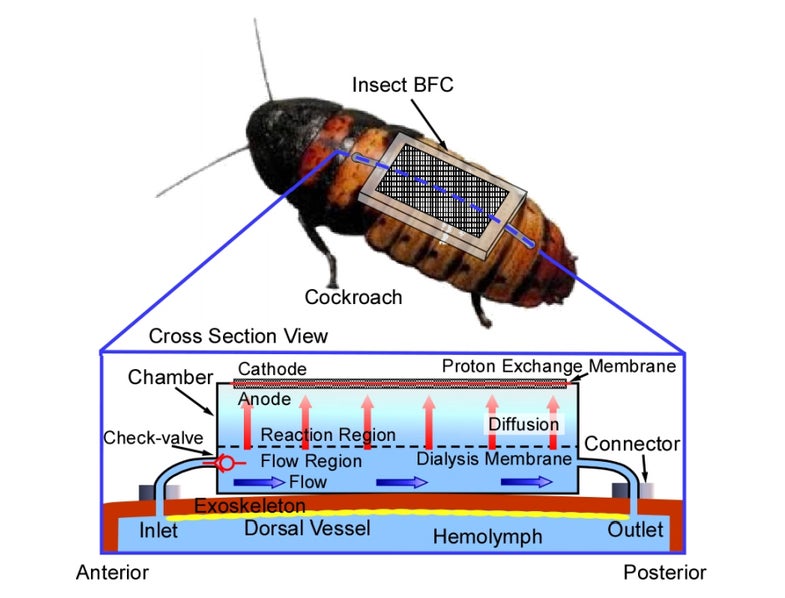Now In Japan: Giant Cyborg Cockroaches
Don't worry, they're probably only here to rescue you. Probably.


Photograph of a Madagascar Cockroach with connectors, tube and check-valve
What if tiny scurrying insects could power batteries with their own bodies? Thanks to a team of researchers from the Tokyo University of Agriculture and Technology and the Department of Mechanical Engineering at Osaka University, we now know this is possible. The team built a fuel cell that goes on the backs of cockroaches and is powered by the roaches themselves.
The scientists used Madagascar cockroaches, which have the benefit of being enormous. To the back of a cockroach, researchers attached a fuel cell, which contains fluid and electrodes, and connects to the insect’s body fluid through two tiny pipes: one that lets roach body fluid into the cell, and one at the other end that returns the fluid to the roach. The paper includes this helpful schematic:

Cockroach Biofuel Cell Schematic
The fuel cell generates electricity via an oxidation-reduction reaction. It uses trehalose, the main sugar in the circulatory fluids of insects. Inside the fuel cell, enzymes break the trehalose down into glucose. The glucose is then oxidized, and electricity generated. Researchers fed the cockroaches trehalose-rich diets to make sure they had enough in their systems to power the battery. The system generates about 50 microwatts.
Why do all of this? To turn the roaches into better cyborgs! It’s already possible to control roaches with electrical stimulation. This fuel cell provides a stronger power source for electric control plans, and could lead to an army of tiny terrifying robots controllable bugs that can go places people can’t, for safety or size reasons. Say the researchers:
Read the paper here.
